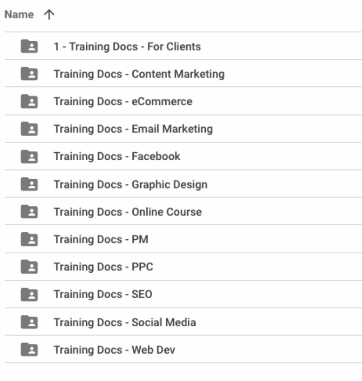
Imagine this: You have a small business and you still have time for yourself. Well, you don’t have to imagine it if you systemize your business.
Whether you’re an entrepreneur that’s just starting out or a long-time business owner hoping to scale successfully, you need to systematize key areas of your business to support a ton of growth.
But why systematize your business? Well, growing your business and taking it to the next level can be done sustainably — or chaotically!
If done chaotically, growth is unstable and doesn’t provide consistency, making for unhappy customers and employees. Often, a business that has grown without putting systems in place will be wildly inconsistent with its success — and that can be discouraging to everyone involved in the company.
But if done sustainably (by systemizing your business for stable growth), it can provide long-lasting gains and continuous and consistent success. So, developing systems for your company is crucial to building a firm foundation for future, steady growth.
1. Determine which process documentation platform to use.
Your business processes must be accessible to all, easy to understand, and simple to follow. This means you’ll need something more versatile and robust than a Word document, physical binder, or webinar to record your business’ processes.
The best way to set up and store your business systems is to use a documentation platform. Here are the four things to look for in any process documentation platform:
- Accessibility: Meaning, that your entire team can use the platform.
- Simplicity: Learning how to use the platform shouldn’t take hours upon hours.
- Supports all media types: You should be able to document processes using video, audio, written checklists, and even image files. Your chosen platform must support any necessary documentation format.
- Permissions: Your team needs access to vital systems, but there may be additional documentation that is for certain “eyes only.” Your platform should allow you to determine which employees access what procedures and documentation.

2. Document existing systems.
Now that you have a place to store your systems, it’s time to document them.
Determine the best format to use by documenting a few systems of your own and sharing the completed processes and procedures with your team. They can tell you what’s missing and help you determine the most appropriate documentation methods for your business.
Then, make sure you delegate your documentation to the appropriate departments so they can capture the on-the-ground knowledge needed to get things done in a particular area. (Spoiler alert: you’ll find the most important departments in the next section.)
3. Find holes that haven’t been systematized.
Run through the systems that you and your teams documented. Are there holes in your systems? Meaning, are there inconsistencies in any of these systems? Or, are there specific actions that each team member performs differently?
These are usually found in areas where your teams are having the most trouble — or where you consistently have to jump in to put out fires.
4. Build systems to fill any holes.
It can be tricky to document areas where one team member does things one way, and another performs completely different actions to solve the same problem.
In my years of experience as a business consultant, I’ve found the best way to determine the right business system for these types of actions. And that is: get every team member performing the work in one room and have them hash out the most effective process together.
Here are some questions you can ask your team members:
What has worked best to handle this (job, issue, area)?
What was the result when you did it that way?
Why did that work?
Could it have been done in another way to get a more favorable outcome?
Once you’ve found the most successful actions from these questions, have the team document the process they’ve chosen. Then, have them run through it and see if their way works in practice. If it doesn’t, determine what steps are missing and add them in. After that, run through the system repeatedly until every aspect of the problem and/or job runs smoothly
5. Perform a run-through.
Now that you have all areas in a department or business systematized, it’s time to test those systems. That starts with running through each process and procedure to ensure they work and are accessible.
During a run-through, some systems will start another process in a separate department. These systems must trigger the processes you’ve set up in that separate department. For example, the end of the sales process will start the scheduling or fulfillment process. Business systems often interact with each other so that interaction also needs to be tested.
Systemizing your business means putting yourself on the path to running the most successful business you can.
It gives your employees the space they need to breathe, while letting you take a step back (and maybe some much-needed time off) as the business processes take care of themselves.
About the Author:
Amy Miocevich is an Australian author of Very Good Marketing, director of her company Lumos Marketing and a mum. Amy has a plethora of business knowledge and experience helping individuals across all industries over her professional career. She has a deep and innate passion to help small businesses achieve their Big Hairy Audacious Goals, whatever they may be. When Amy isn’t busy working or waking up at 5 am to run, she is probably eating ramen or wanting to eat ramen. Say hi to Amy at amy@lumosmarketing.com.au.










